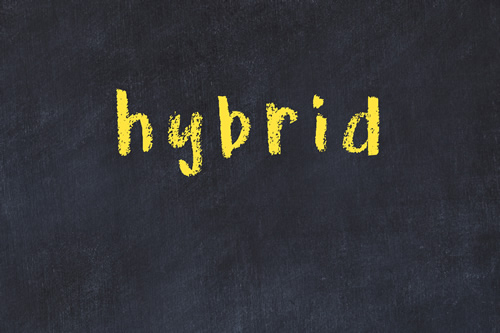Earlier this year the United States, just like most countries across the globe, witnessed the life-altering impact of COVID-19 first-hand. In particular, students and educators saw their usual routine completely turned upside down as they were unprepared for the vast impact the virus would have on how students learn and how education settings operate.
Unfortunately, with the majority of children still not back in the classroom and a second wave upon us, it is vital that schools, students, and educators are ready for the further impacts this will have. As part of this, they need to be aware of the options and solutions available to them to ensure teaching and learning can continue as seamlessly as possible, whatever the future holds.
Related content: 3 strategies for hybrid learning
Adopting a hybrid learning system is perhaps the most logical thing to do in many educational settings, as it could prove pivotal in ensuring schools remain able to operate and students remain able to learn in the coming months as COVID and potential lockdown measures continue.
Hybrid learning may not be a perfect solution for everyone, but it is an excellent buffer between the well-known classroom education and the sometimes too-techy virtual one. In a hybrid learning setting, both educators and students get to use a lot more edtech during the school day without completely losing the much-needed face-to-face interaction.
Edtech plays a pivotal role in making hybrid learning not only possible, but maybe even better than traditional education.
Here are a few reasons why:
It facilitates differentiated instruction
Every student has a specific academical background, a unique set of interests and learning needs, as well as expectations from what a great learning experience should be. One-on-one instruction is the best way for students to reach their full potential, but it is rarely possible in the classroom, where one educator has to teach several students in a limited time.
When edtech comes into play, specifically through a comprehensive solution that allows teachers to create courses online, assess students and track their progress, and communicate with them through the same platform, things start to get interesting. Educators can tweak the delivery of each lesson, opt for more than one assessment type, and generally get a bird’s eye view of each student’s progress, which allows them to intervene with specific help and personalized recommendations whenever a student struggles with something.
This degree of differentiation, from the content they get, the ongoing support, and the possibility of proving their mastery of a subject in more than one way, helps students perform better academically.
It adds more flexibility to the learning experience
More often than not, the traditional learning experience is based on lectures and presentations given by the teacher and students taking notes on the taught subject. Classroom discussions and group work are often included but don’t always last enough to clarify all issues.
When lectures move online through pre-recorded video lessons, time in the classroom can be spent differently. Students can watch those lessons at their chosen time of day and go through them at their own pace (rewatch some parts, pause the video when things are not entirely clear, etc.) Then, when everyone meets face to face, students will have some prepared questions and will engage in more conversations surrounding the topic.
This technique is also called the flipped classroom and it allows educators to better clarify the concepts they are teaching and students to explore even more of the things they’re interested in through extended classroom discussions and extra resources.
It improves student engagement
Students’ attention can be hard to get and even harder to keep. Teachers of all grades are well aware of this. There has to be some spark of interest when learning something new; otherwise, things get on the slippery slope of rote learning, memorization, and the only objective of passing standardized tests.
When education moves at least partially online, it opens the doors to endless possibilities of capturing and channelling students’ attention on the path of authentic learning. First of all, asynchronous online lessons let students decide when they want to learn. Then, multimedia content, gamification techniques, interactive online activities, or adaptive learning platforms pull the weight of creating an engaging learning experience.
Edtech and online learning give more agency to students and encourage them to tap into their natural curiosity and interact with their peers, with their teachers, and with technology in a way that keeps them excited about discovering new things.
Take everything with a grain of salt though
It should be noted that the mere existence of edtech in a classroom is not like a magic solution that makes hybrid education a breeze. Students don’t become more engaged in learning activities simply because they use technology, they are not all of a sudden self-directed and willing to explore the possibilities of the flipped classroom, and teachers don’t always know how to make the most of edtech and create the best online instruction. There are plenty of challenges to overcome, and each educator needs to find one or more strategies that work best for their classroom.
Most importantly, edtech needs to be viewed as a supporting tool in the greatest scheme of education and used as such. Edtech alone does not replace teachers’ work, and it doesn’t automatically improve the student learning experience; but when it’s used to enhance the work of educators and to improve the quality and quantity of educational content, learners will thrive — either in the hybrid classroom or even in the virtual one.
- Empowering girls with STEM education to build tomorrow’s tech industry - April 29, 2024
- How a small school in Sierra Leone uses remote learning to offer high school - April 29, 2024
- 4 ways to encourage play in education - April 25, 2024

